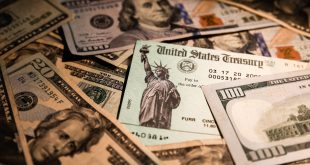The U.S. dollar maintained its strength on Tuesday, as investors braced for an expected interest rate cut by the Federal Reserve and recalibrated their outlook for the pace of monetary easing in 2024. Traders are increasingly convinced the Fed will adopt a gradual approach to reducing borrowing costs amid persistent signs of U.S. economic resilience.
The dollar index remained steady, benefiting from robust economic indicators. The Atlanta Fed’s GDPNow model projects a 3.3% growth rate for Q4, underscoring the economy’s momentum. Meanwhile, data from the S&P Global Purchasing Managers Survey showed U.S. services-sector activity climbing to a three-year high, further supporting the case for a more measured pace of interest rate cuts.
Markets currently imply a 94% chance of a 25 basis point reduction in the Fed’s rate decision on Wednesday, but pricing reflects lingering caution. Fed officials’ long-term projections place rates at 2.9%, yet markets see almost no chance of such levels being reached by the end of 2024, with only a 30% chance of rates falling below 3.75% by 2025.
Euro Eases, U.S.-German Yield Spread Near Five-Year High
The euro dipped 0.2% to trade at $1.0482, continuing its downward trajectory this year with a nearly 5% decline against the dollar. Rising bond yields in the U.S. and Germany highlight diverging rate expectations. The yield gap between U.S. Treasuries and German 10-year bonds widened to 216 basis points, near its five-year peak, reflecting expectations that the Fed will maintain higher rates for longer compared to the ECB.
Sterling Gains on UK Wage Growth Surprise
The British pound emerged as one of the few currencies to strengthen against the dollar, rising 0.1% to $1.2696. The gains followed data revealing UK wage growth accelerated more than anticipated in the three months to October, reinforcing the Bank of England’s (BoE) cautious stance on rate cuts. The BoE has consistently pointed to rising wage pressures as a barrier to early monetary easing.
This comes alongside survey data on British business activity, which pointed to mounting price pressures in the economy. The figures bolster expectations that UK rates may remain higher for longer compared to other major economies.
Swiss Franc Weakens After SNB Surprise Cut
The Swiss franc fell significantly after the Swiss National Bank (SNB) delivered a surprise 50 basis point rate cut, exceeding market expectations for a smaller move. The franc weakened to 0.8874 against the dollar and to 0.9345 against the euro, marking its softest level since late November.
Canadian Dollar Hits Multi-Year Low
The Canadian dollar dropped to a 4-1/2 year low, trading around C$1.4277 to the dollar, amid mounting political and economic pressures. The unexpected resignation of Finance Minister Chrystia Freeland on Monday intensified concerns over Canada’s economic outlook, with traders wary of the risks posed by potential U.S. tariffs and weak domestic growth.
Yen Firms Slightly, Markets Eye January BOJ Decision
The Japanese yen edged higher, with the dollar down 0.15% to 153.89 yen, following six consecutive days of yen selling. Markets have dialed back expectations for a rate hike from the Bank of Japan (BOJ) at its upcoming meeting, shifting focus to a potential move in January as policymakers assess overseas risks and domestic wage trends.
Aussie and Kiwi Near Yearly Lows
The Australian dollar fell 0.41% to $0.6345, and the New Zealand dollar declined 0.39% to $0.5760, both hovering near yearly lows. The Kiwi faced additional pressure after New Zealand revised its bond issuance forecasts upward, reflecting growing fiscal challenges.
Yuan Steady Amid Chinese Growth Concerns
The Chinese yuan remained steady at 7.2892 per dollar in offshore trading. Chinese bond yields are pinned near record lows amid concerns over slowing growth. Recent reports suggest Chinese leaders are preparing to raise the budget deficit to a record 4% of GDP next year while maintaining a 5% growth target.
Rate Decisions Loom Large
Currency markets remain cautious as investors await key monetary policy decisions later this week. In addition to the Fed, the Bank of Japan, Bank of England, Norges Bank, and Sweden’s Riksbank will announce their respective rate decisions on Thursday. Sweden’s central bank is widely expected to deliver a 50 basis point rate cut.
With divergent rate paths among major central banks, volatility across currency markets is likely to persist as traders seek clarity on the pace and extent of monetary easing heading into 2024.
 Noor Trends News, Technical Analysis, Educational Tools and Recommendations
Noor Trends News, Technical Analysis, Educational Tools and Recommendations




